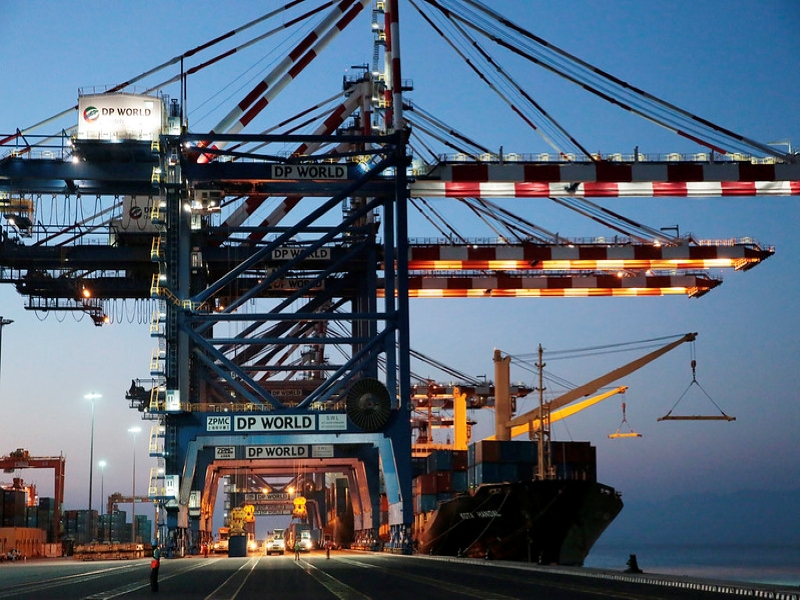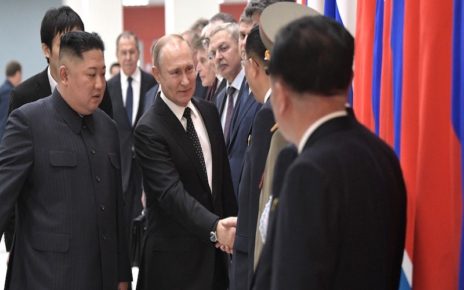Abstract: How should NATO member-states and global partners approach the geostrategic dimension of the BRI? In this article, Program Editor Mark Davis Madarang Pablo examines the expansion of military and paramilitary activities in developing countries linked with China’s emerging integrated network of mega-infrastructure projects across the Indo-Pacific.
All Roads Lead to Beijing? The Geostrategy of the BRI
Much of the discussion surrounding China’s 14th National People’s Congress (NPC) annual session on March 5-13, 2023 and the 3rd Belt and Road Forum for International Cooperation (BRF) on May 24, 2023 was on providing political stability and leadership amidst Beijing’s lackluster economic growth performance of 3 per cent GDP last year. Notably, there had been minimal reference to the geostrategic component of the Belt-and-Road Initiative (BRI)—dubbed as China’s primary instrument of foreign policy to overcome its perennial problem associated with capital overaccumulation and industrial overcapacity, and cement its position as a regional economic leader in the Indo-Pacific. In other words, less emphasis was given to the ongoing and future expansion of the role of the People’s Liberation Army (PLA) and other related organs within the broad security apparatus of the Chinese Communist Party (CCP) to secure and protect Beijing’s growing economic presence and influence across the region in light of heightening geopolitical tensions with the United States. Xi only briefly alluded to such during the NPC when he stated that “security is the bedrock of development”, and hence, vowed to modernize the PLA into a “Great Wall of Steel” capable of defending China’s commercial interests abroad by 2035. This coincides with the CCP’s strategic objective of attaining socialist modernization also by 2035, as stated in the Communique, issued after the Fifth Plenary Session of the 19th CCP Central Committee in 2020.
Divergent Threat Perceptions in the Indo-Pacific
I argue that NATO member-states and global partners have an uneven threat perception surrounding the Chinese military and paramilitary forces along its terrestrial and maritime trade and investment routes. In its bid to protect its growing commercial interests along the BRI, the CCP through the PLA has arguably grown more hawkish in its “near seas”, with greater emphasis on assertion of territorial and maritime sovereignty and military power projection, while upholding mainly its dovish character in its “far seas”, with more focus on the conduct of non-traditional security missions. Although not mutually exclusive, such disparity in the overall defense posture has resulted in divergence in risk calculus among different countries in the region towards the expansion of Chinese military presence, influence and activities across the Indo-Pacific.
Within what China considers as its “near seas”, Beijing has been assertive in staking its territorial and maritime sovereignty over Taiwan and all features, waters and resources contained within the nine-dash line in the South China Sea. China’s ultimate aim is to dominate the First Island Chain by exerting greater control over the strategic waterways in Asia, monopolizing access to the rich fishing grounds and oil and gas deposits, and shielding its coastal urban centers from what it perceives as “strategic encirclement” by the United States and security allies. This may help explain why the PLA conducted drills in preparation for encircling Taiwan during President Tsai Ing-Wen’s “unofficial transit” to the United States, and staged three days of “combat readiness patrols” involving 42 military planes and eight ships traversing the Taiwan Strait median line as a stern warning against Taipei’s declaration of formal independence.
Furthemore, the Asia Maritime Transparency Initiative reports that in the South China Sea, Beijing has established 20 outposts in the Paracel Islands and seven in the Spratly Islands, seized Scarborough Shoal from the Philippines in 2012, and embarked on artificial island construction in the Spratly Islands which added 3,200 acres of new land. These man-made islands now function as forward operating bases for the PLA’s Southern Theater Command wherein they serve as launching pads for the Chinese Navy, Coast Guard and maritime militia to harass other Southeast Asian regional claimant states that also have overlapping claims as well as extra-regional powers traversing the international maritime and air spaces. This is demonstrated during the laser pointing incident between the Chinese and Philippine Coast Guards, and the latest near-collision incident between the Chinese J-16 fighter jet and the US RC-135 Rivet Joint reconnaissance aircraft. Once left unchecked, these acts of provocation alter the facts on the ground which, in turn, may challenge the enforceability of the 2016 Arbitral Tribunal ruling at the Hague. Also, these create diplomatic backlash which, in effect, may undermine mutual trust and delay the passage of the China-ASEAN Code of Conduct. Lastly, these cast doubt among China’s neighboring states on the oft-stated “win-win cooperation” grand design of the BRI.
Conversely, the PLA has enjoyed a relatively benign image in its so-called “far seas”, particularly in Indian Ocean and Africa, given the distinctiveness of its mission requirements, absence of sovereignty disputes with countries involved, and integration of concepts of defense presence with international development. Kristen Gunness notes that in this part of the Indo-Pacific, the PLA has engaged mostly in non-traditional security missions aimed at ensuring the safety and security of Chinese nationals residing abroad, maintaining access to energy resources crucial to Chinese economic development, and protecting global maritime commons from piracy and other security threats. A few examples include: humanitarian assistance and disaster relief (HADR) (e.g. rescue of almost 600 Chinese nationals and 225 foreign nationals from Yemen in 2015), noncombatant evacuation operations (NEOs) (e.g. transport of more than 1,300 Chinese nationals from Sudan in 2023), counterpiracy operations (e.g. response of Chinese team from Type 054A PLAN Yulin to distress call off the Gulf of Aden in 2017), and peacekeeping missions (e.g. deployment of 1,100 PLA troops in South Sudan in 2021).
Policy Options for NATO Member-States and Global Partners
In response to such divergence of threat perceptions among countries towards China in the Indo-Pacific, NATO should consider crafting a three-pronged strategy of economic de-risking, integrated deterrence and mission-based multilateral cooperation. Drawing both from the NATO Strategic Concept 2022 which designates China as a “systemic challenge to Euro-Atlantic interests, security, and values” and the practical lessons on the danger of European energy overreliance with Russia, NATO member-states and global partners must aspire to reduce their economic vulnerability and that of other non-NATO low- and middle-income countries vis-à-vis Beijing. This may be achieved by strengthening alternative platforms and mechanisms for global infrastructure development, such as the G7-led Build Back Better World (B3W) Partnership and EU Global Gateway, as well as other regional initiatives, such as the Ayeyawady-Chao Phraya-Mekong Economic Cooperation Strategy (ACMECS) and India-Myanmar Border Area Development Project which aim to assist recipient countries in improving their domestic business and investment climate and enhancing their cross-border trade and transport connectivity without the risk of debt trap. For B3W Partnership, the United States must follow through on its plan to mobilize US$200 billion for the partnership in the first five years, while Canada and the rest of G7 nations should seriously invest US$600 billion in global public and private infrastructure funding by 2027.
Furthermore, NATO should enhance the integrated deterrence posture of the NATO Plus Alliance (which currently includes the 31 member-states in North America and Europe plus Australia, New Zealand, Japan, Israel, and South Korea) by extending its offer of membership to other like-minded middle powers such as Singapore, Thailand, Philippines, Indonesia, and India, among others that are equally committed to the preservation of the international rules-based order. Under a newly expanded global security alliance framework, existing and prospective members may improve their defense policy/strategy coordination, military and police intelligence-sharing, defensive capability development, and interoperability for full-spectrum operations from hybrid to conventional warfare. The expanded alliance may also consider harmonizing its strategic interventions with those of other emerging multilateral security arrangements in the Indo-Pacific, such as the AUKUS and the QUAD to ensure that the global sea lanes of communication remain free and open for all.
Lastly, notwithstanding the intensifying strategic competition, NATO member-states and global partners must continue to work closely with the PLA in providing peace, safety and security in conflict-affected/disaster-ridden areas along the BRI, especially on HADR, NEOs, counterpiracy operations, and peacekeeping missions through various multilateral institutions, such as the United Nations, Association of Southeast Asian Nations, African Union, and South Asian Association for Regional Cooperation, among others. The ultimate objective of such three-pronged strategy is to enhance the overall economic resilience among NATO member-states and global partners, as well as provide both carrots and sticks for China to abide by the rules-based international order and share the responsibility of protecting the global commons in the Indo-Pacific as the best way forward to secure its commercial interests along the BRI.
Photo: “Soldiers with the People’s Liberation Army at Shenyang training base in China” (2007) by Staff Sgt. D. Myles Cullen, U.S. Air Force via Creative Commons. Photo courtesy of the United States Department of National Defense.
Disclaimer: Any views or opinions expressed in articles are solely those of the author and do not necessarily represent the views of the NATO Association of Canada.





